
Dan P.
-
Posts
720 -
Joined
-
Last visited
Content Type
Profiles
Forums
Articles
Gallery
Downloads
Events
Posts posted by Dan P.
-
-
7 hours ago, basher said:
Dan is your motor wired in star or delta?
I don't know! The connection in the photo above is the only thing coming close to anything that could be configured.
-
Thanks for your extensive reply, Tim!
Photo 1 and 2 are of a box on the side of the machine that may serve as a terminal box, though it does not contain what I would expect to find in a modern motor terminal. (There is an earth wire in the 2nd photo, it is just somewhat obscured).
According to the original drawings, the existing motor should be "C.P. Motor 3 H.P. at 940 R.P.M.". The hammer is intended to run at 250 bpm.
Have twiddled with the speed a bit, the hammer runs pretty well at more or less the rated bpm when I turn the speed controller from 65 (top speed, photo 3), where it would not run at all, down to 45 where it seems to work quite well. If the speed is turned down to 40, the motor craps out again.
Interestingly when the clutch is disengaged, changing the speed has the predicted effect on the speed of the motor. Under load, however, the speed of the hammer remains constant irrespective of what speed the controller is at.
Here is a link to two videos of the hammer working;
As you can see, it seems to work okay, though it is clear that there is a lack of power when the clutch is first engaged, and also when I want to put the hammer "flat out" the motor slows or stalls (not belt slippage) -
Hi timgunn1962, it's nice to bump into you here, having benefitted from your many experiments and posts over at British Blades (especially as re/discoverer of "amal" burners, I think? Which has benefitted many over here).
I had a "phone a friend" situation with this motor/vfd set up, and the friend in question did make it clear that a "delta" configuration was necessary, or at least preferred, for 1ph to 3ph VFD connection. However, on opening the conduit/terminal box on the motor, the wires that went into it just carried straight on through deeper into the motor. And of course they were all the same colour. So I crossed my fingers, said a few Hail Marys, and wired her up to the VFD, without dramatic incident.
I will get some more photos when Im back at work tomorrow, but part of my problem is that this motor is, I think, original (1948), and does not have a plate to specify what is going on with it. I presume it is therefore by default in star configuration? Would that be a correct assumption? And thus perhaps an explanation of what is going wrong?
On 6/15/2018 at 2:51 PM, tylerdewitt said:What model VFD are you using? I bought mine used, and discovered the previous user had programmed a parameter that limits the output current.
The VFD is new, thus;
ebay link removed
-
8 hours ago, Charles R. Stevens said:
Take precautions sanding on it if it is asspestose, we used soapy water to wash down brake dust during the change over.
What happens if you flip the disk over?
It's riveted on, and I'm not keen to take out the rivets to find out. Thanks for the advice re; asbestos.
I think I will try facing it with some leather, see what happens, otherwise send it off to the brake pad people to get re-done.
7 hours ago, Judson Yaggy said:Free advice is worth every penny.
Huh?
11 hours ago, BIGGUNDOCTOR said:I would like to see some more pictures , and some details about the Massey. Stout looking hammer.
I'll post some stuff when it's properly up and running.
The hammer was made in 1948 for Seedland Bros., a manufacturer of chisels and plane irons in Sheffield. Ram is 1/2 Cwt.
The hammer is well broken in, shall we say? Well used but not abused, and built like the proverbial brick sh^thouse!
-
So, the hammer is in, and a VFD installed without hitch.
The motor starts as it should, the flywheel flies, but the movement craps out under load. I saw this hammer under 3 phase power before I purchased it and it was fine.
I lowered the motor speed, and the hammer performs to a functional but not optimal level.
I have not tried to enter any settings on the VFD yet, and the instruction manual was not written for laymen. Is there something that the VFD itself can do for this weak torque?
Any further pointers appreciated.
Video attached of hammer crapping out before I lowered the motor speed on the VFD
-
Many thanks for the suggestions. I'm not sure what's gone on, perhaps it took a bit of a ding in transit, but the brake pad makes insufficient contact with the other brakey part. The only thing to be done is to bring make the pad thicker=bring the two plates closer together.
For interest, that disk in the last picture is part of a mechanism that goes forward to engage the clutch cone, and backwards to engage the brake. The brake (the part with the pad) rotates with the main shaft.
-
I was wondering if the material was identifiable so that I could have some idea of how deep the "tread" pattern was.
It does not contact the brake disc sufficiently to brake the hammer. Perhaps it is a problem that could be solved mechanically as you suggest, or by another means.
-
-
-
12 minutes ago, Marc1 said:
Is it possible to get 3 phase installed?
No, it is prohibitively expensive in this country, unless you already have it from 30 years ago when they would install it practically free (or so I'm told). According to my electrician mate it's not really necessary either for the size of machines that I'm running.
13 minutes ago, the iron dwarf said:starting current will be a bit more than 13A, if you know a local sparky talk to them.
turning the flywheel will mean a lot of load to get it up to speed, it will be like starting your car engine with it in top gear and getting it to 90mph in 3 seconds, when the motor is going it will take a lot less.
reduce the pulley size on the motor to run the hammer
you will want that same power and try working out the correct pulley size to keep the flywheel at the same speed it was before
Thanks. I don't mind the hammer being a little faster, or a lot faster, actually, but if I got a new motor I'd likely have to get a new pulley anyway so no drama there, except of the £££ variety. It's mostly the bare facts of how electricity works that have me bamboozled.
-
Thanks Owen. The hammer is 250 rpm (could go for a bit faster, maybe 300 rpm), the motor is 940 rpm.
This motor has full load current of 13 amps, not that I really know what that means. I presume it is suitable?;
Do you know if higher amperage (??) is something that the average sparky can help me with?
On 3/13/2018 at 4:16 PM, basher said:What rpm is the hammer running at Dan?
The hammer is a Massey spring hammer. 250 bpm by design, though perhaps would benefit from greater speed. The ram weight is 1/2 cwt, but the springs must add another 30+ kg of inertia.
-
On 3/13/2018 at 2:31 PM, BIGGUNDOCTOR said:
I ran a lot of 3 phase equipment by wiring the single phase 220V through a second 3 phase motor that was as large or larger than the one on the lathe, mill, surface grinder, etc. I was given a pallet of surplus 3 phase motors, so I did not have that expense. If I ever get a shop built, I have a rotary phase converter that will go into it for my equipment. By using the rotary converter it will provide 3 phase for the whole shop, and it will handle a combined 60hp and start up to a 15hp motor. The nice feature of VFDs is that you can vary the speed, unlike a phase converter that cannot do that.
Sounds like this would be rather above my pay grade. Is this what's meant by "slave motors"?
On 3/13/2018 at 2:44 PM, Kozzy said:Old motors often don't play well with VFDs because the older motors tend to generate too much heat for the old lacquers used on the windings when run at less than the rated RPM. So---it's a shot in the dark whether a VFD would be fine with that old motor or not.
You are selling me the VFD option. The old motor in question could do with being sped up a little. I did think of the soft start capacity but I'm guessing that's not so important with a mechanical hammer because it's only turning the flywheel to begin with.
My main problem is that I would be inclined to get an electrician involved, which means £££.
-
I am moving to a workshop which inly has single phase power.
I'd be grateful to hear opinions, preferably born of experience, on whether to go with a VFD or whether to mount an appropriate single phase motor.
The power hammer is mechanical, bow spring, 1/2 cwt, the existing motor is probably original (1948) or at least very old, 3 hp.
I imagine the bow springs add considerably greater weight to the business end than coil springs do.
I am electrically illiterate, so am leaning toward getting a new motor, but those old motors are beasts, and I am loathe to separate it from its old friend.
I imagine the cost will likely be about approximate.
Your thoughts?
-
On 2/18/2018 at 11:34 AM, Joel OF said:
I didn't notice before you're in the Forest of Dean. That can only be an hour from from F-Y-F, no? My local steam train line (Romney Marsh in Kent) uses F-Y-F coal, you must be able to get it easier than they can.
For your own safety, please never suggest that someone who is not in the forest of dean is in the forest of dean.
Likewise, please never suggest that someone who is, isn't.
For the record, I am not, nor ever have been in the forest of dean.
Anyway, it happens that a change of circumstance will see me back on the propane for the forseeable future.
-
I was going to do that, John, though I no longer have the choo-choo trains going past the bottom of my garden as I once did (sad face emoji).
-
Many thanks, Joel and John, I will look into that.
Dan
-
I've heard the rivetting/boiler maker thing about those hammers before. Might be right?
-
As decent coke looks to become scarce in the near future, does anyone know if any of the surviving collieries in the UK produce decent coal for smithing?
I was particularly interested in any free mines (or whatever it is called where free miners dig) in the Forest, as that is about as low carbon footprint as fossil fuel can get, though what very very little literature I've been able to scour from the internet suggests that the seams in the Forest produce pretty poor coal for our purposes.
Any body?
*Forest of Dean
-
The crown suggests the date of a royal warrant or similar, rather than the date of manufacture.
-
3 hours ago, ThomasPowers said:
These were larger; but thanks for the offer! Where did you source yours?
The new vitrified aluminium oxide ones are pretty indestructible and offer very good value if you use abrasives a lot, which I do.
My old one is a cement/slip wheel. It requires a lot of maintenance and is low rpm.
3 hours ago, Irondragon Forge & Clay said:Thanks for the anvil grinding picture Thomas. I may have a slight bit of CRS
Yes, thanks for finding that picture, Thomas, and thank you too, Ironwagon, for your highly valuable input.
-
Thomas, if you'd like to pay for the shipping you can have my old one. 36" x 6".
-
Just now, Irondragon Forge & Clay said:
BTW, that photo has been shared several times on IFI.
Oh? Where?
-
"I always wondered how they ground anvils before surface grinders."
Wondering about something does not indicate a question, no.
Now you know, you can stop trolling my thread.
Many thanks.
-
2 minutes ago, ThomasPowers said:
I guess we share the lack in our New Years Resolutions. My big point is that they didn't specify what they didn't get so people could make a specific explanation; they could have been talking about the workman's cap!
"They"?
I posted the photo for general interest; The use of the "handling holes", the way in which the anvil surface is being ground, the fact that the wheel is geared, etc.
There is nothing I "don't get" about this photo. It's interesting, perhaps in different ways to different people, that is all.
In my language we have a special word for what I have done here. We call it -"sharing"-.
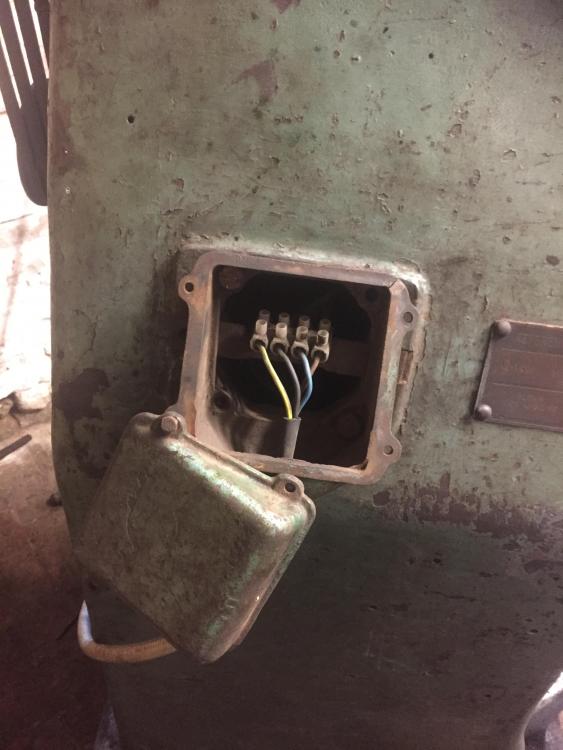
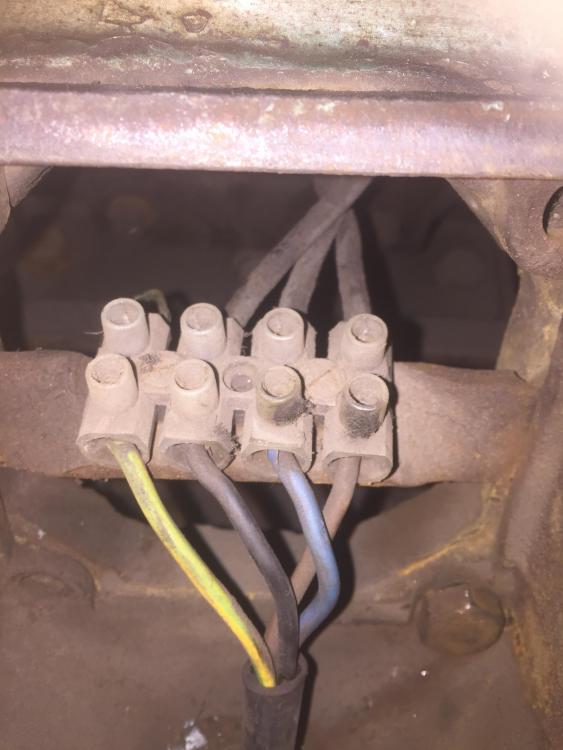
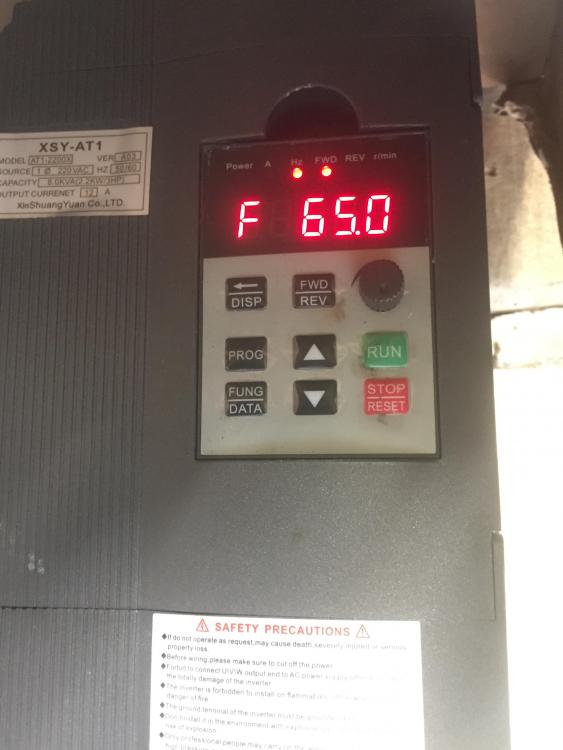
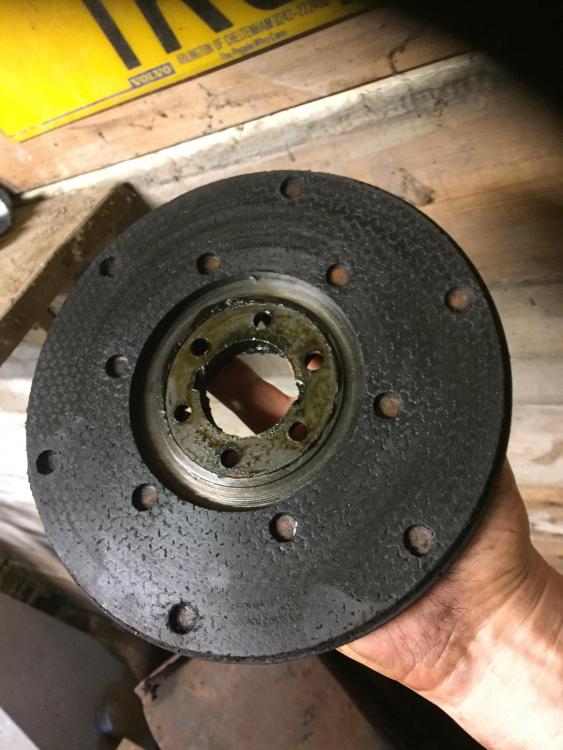
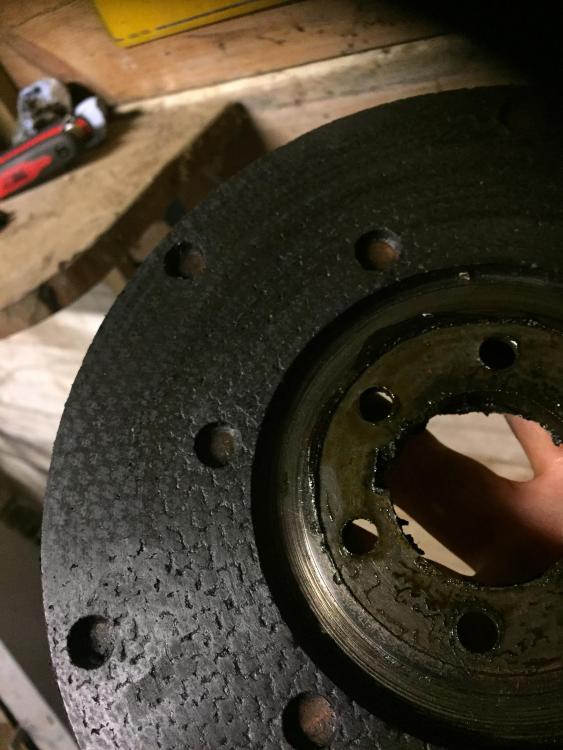
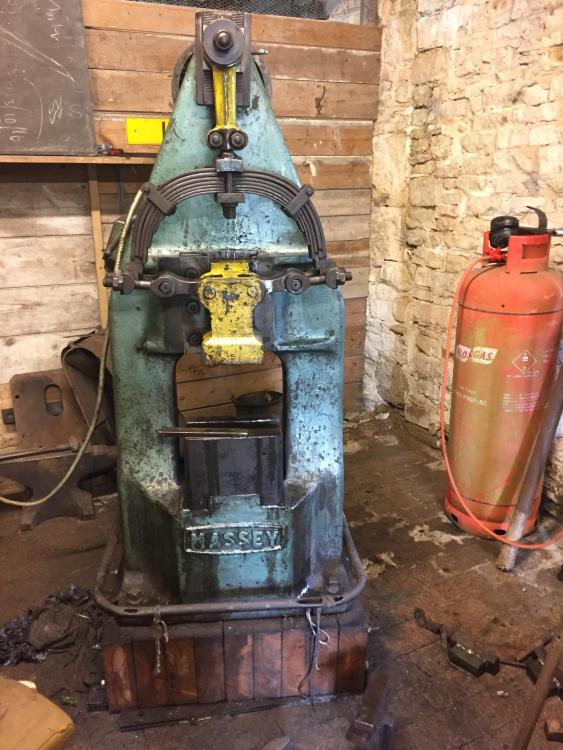
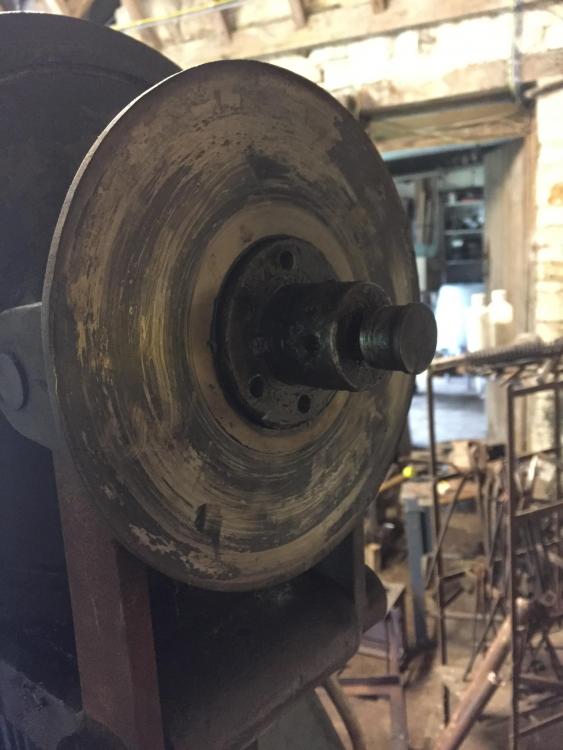

Motor question- VFD or single phase
in Power Hammers, Treadle Hammers, Olivers
Posted
Just returning to this in case it may be of benefit to someone else; In the end I just put a new motor in, 3 hp single phase, works a treat on this size hammer, and tbh the cost of a decent VFD (ie one that doesn't go BANG! after 3 months in a dusty environment like a forge) would have been 2 or 3 times that of a decent motor at least.
Bigger hammers, bigger motors might be a different story.